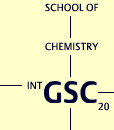 |


![]()
Name: Nina Preschitschek
Diploma / M.Sc degree: Westfälische Wilhelms-Universität Münster, Germany
(June 2009)
PhD Project: Convergence in the Chemical Industry: Identifying Blurring Boundaries of Research, Technology and Markets
Homepage: http://www.uni-muenster.de/Chemie.bm/institut/preschitschek.html
Abstract of Research Project
In recent years, the chemical industry has undergone significant changes. High volatility in crude oil prices as well as a growing concern for sustainability led to a significant interest in switching supplies to renewable resources. One example for this development is the growing market for biopolymers. Polylactic acid (PLA), starch based polymers or natural oil polyols are commercially available biopolymers which have begun to replace petroleum-based polymers for a wide range of applications. In the course of this development, established agricultural firms as well as some biotechnological start-ups have entered the market for biopolymers and have therefore become new competitors for incumbents in the chemical/materials industry. Hence, the boundaries between the agricultural, chemical and biotechnological industries begin to fade. This phenomenon is called industry convergence and it is characterized by the blurring of boundaries between formerly distinct industries, covering their value propositions, technologies and markets.
Developments in the information technologies, consumer electronics and telecommunications (ICT) sectors are the most prominent examples of industry convergence. There, fading boundaries regarding technologies and markets have led to multi-purpose products and services, like Apple's iPhone or VoIP-telephony (Voice over Internet Protocol) such as Skype. Another example is the partial convergence of the pharmaceutical and the food sector, who are marketing "Nutraceuticals and Functional Foods" products like Unilever's cholesterol lowering "Becel proactive" margarine.
As industry convergence implicates some threats for well-positioned incumbents in the respective industries, a firm's response time is key to its future success in a setting of convergence. Firms very suddenly have to employ new knowledge in regard to technologies, market environments as well as customer behavior. Thus, there is a strong demand for an early warning system to anticipate industry convergence. My approach includes the identification of science and technology convergence as antecedents of industry convergence. According to my concept, convergence starts with a decreasing distance between formerly distinct scientific fields, characterized by an increasing trend of cross-disciplinary citations and a growing number of publications, co-authored by authors from different scientific fields. The decreasing distance between these fields then leads to technological convergence, characterized by a decreasing distance between applied science and technology development. As patents are considered precursors of new technological developments, increasing cross-sectoral patenting among different industries indicates convergence in applied science.
In my research project, I will test the capability of this early warning system as well as develop it further. To this end, I will focus on bibliometric analyses of scientific publications and patents to scrutinize the trend of scientific and technological convergence leading towards a convergence of the agricultural, chemical and biotechnological industries. In addition, I will derive new indicators to measure the decreasing distance between formerly distinct industries.
Publications
R. Wagner, N. Preschitschek, S. Passerini, J. Leker, M. Winter
Current research trends and prospects among the various materials and designs used in lithium-based batteries
Journal of Applied Electrochemistry 43 (5) (2013), 481-496.
Nina Preschitschek
eMail: Nina Preschitschek